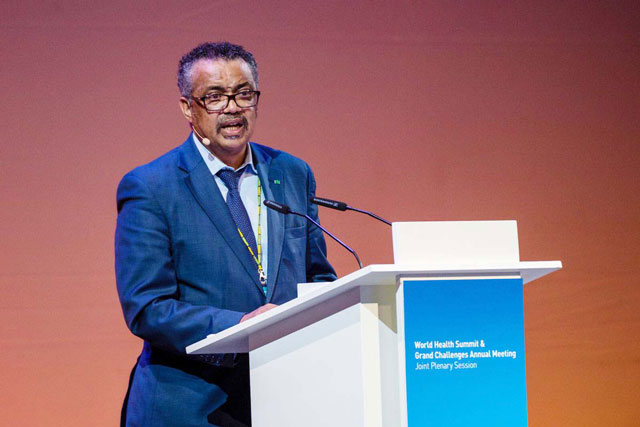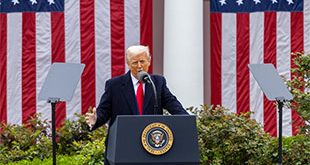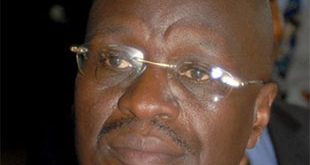
Kampala, Uganda | THE INDEPENDENT & AFP | Dr Tedros Adhanom Ghebreyesus, the Director-General of the World Health Organization who has been criticised by the US for his handling of the COVID-19 pandemic, warned for years that countries were not prepared in case one broke out.
The most shocking outbreak at the time he made his speech at the World Government Summit in Dubai in February 2018, was the spread of Ebola out of West Africa in 2014.
This, said Dr Tedros Adhanom, Director General of the World Health Organisation, exposed fault lines in global security by showing how a fragile health system can expose the world to the risk of catastrophe.
Tedros is renowned for his warmth and tendency to call everyone from colleagues to world leaders “brother” or “sister”, setting him apart from the famously cool persona of his predecessor, Margaret Chan of China.
But while he always seems to have a smile lurking under his trimmed moustache, Tedros has also revealed a fiery side.
After a hefty barrage of criticism from Trump last week, Tedros warned that “if you don’t want many more body-bags then you refrain from politicising” the pandemic.
During that virtual briefing on April 8, Tedros also revealed that for months he had faced a virulent campaign of abuse against him, including racist comments and death threats.
FULL SPEECH WORLD GOVERNMENT SUMMIT 2018
Can we create a pandemic-free world?
Dr Tedros Adhanom Ghebreyesus
Director-General of the World Health Organization
Dubai
Excellencies, ladies and gentlemen,
Thank you for the kind invitation to speak to you today, it’s wonderful to be here with so many distinguished leaders from so many different spheres of life.
I’d like to especially thank the Government of the UAE for hosting this meeting, and for helping us to imagine the future.
As the previous speaker said, from predicting to shaping the future. This platform comes from visionary leadership, and what a great opportunity.
I’d like to begin with a story.
In a military camp, a cook reports to the medical centre with fever, a sore throat, and aches and pains.
Within minutes, a second soldier comes in with similar symptoms. By lunchtime there are more than 100 cases, and more than 500 by the end of the week.
Batallions from the camp are sent to fight a war in foreign lands. Confined living quarters and massive movements of troops provide the ideal conditions for the virus to spread.
Within months, the epidemic sweeps across five continents.
Its symptoms include fever, headache, muscle and joint pain. As the virus takes hold, patients turn blue and suffocate as their lungs fill with fluid.
There are no vaccines to stop the virus, and no drugs to treat it. Many of its victims are young, cut down in their most productive years.
Schools, places of worship, theatres and other public places are closed. Business closing times are staggered to avoid congestion on public transport. Funerals are limited to 15 minutes, to minimise contact. There is a shortage of coffins.
And then, as suddenly as it started, the pandemic ends.
One third of the world’s population has been infected. Up to 100 million people are dead.
Ladies and gentlemen,
This is not some future nightmare scenario. This is exactly what happened, 100 years ago during the Spanish flu epidemic, in 1918.
Spanish flu remains the deadliest outbreak in recorded history, killing more people than the First World War itself.
But its lessons are just as relevant today as they were then: that a devastating epidemic can start in any country at any time, and kill millions of people, because we are not prepared, because we’re still vulnerable.
Thankfully, we have not seen a public health emergency on that scale since then. But we may at any time. Outbreaks are a fact of life, and the world remains vulnerable.
Sometimes it’s just a matter of luck. The H5N1 flu virus which appeared in 2003 is extremely dangerous, but has fortunately not become capable of spreading easily between humans.
Conversely, the H1N1 virus that sparked a global pandemic in 2009 was transmitted very easily between people, but was fortunately mild in most cases.
The most shocking outbreak of our time, of course, was the Ebola outbreak of 2014.
Although it affected three poor West African countries, it exposed fault lines in global health security that put us all at risk.
Apart from its terrible human cost, Ebola also had a devastating economic impact. The IMF reduced its growth projections for the three affected countries. Commodity prices plunged, while unemployment and fiscal deficits rose.
Ebola showed just how the vulnerable the world is.
Since taking office last year, I have made health emergencies – health security — a daily focus at the World Health Organization.
I now receive a daily briefing note keeping me up to date on the state of all outbreaks and other health emergencies globally.
We operate a dashboard with near-real time data on all emergencies.
And we have established the WHO Health Security Council, a fortnightly meeting co-chaired by me and by my Deputy Director-General for Health Emergencies, which does a deep dive into emergencies, to ensure we are not caught by surprise.
Every month, WHO screens around 5000 signals of new outbreaks across the world. We monitor these carefully because ignoring any one of them can be the difference between global spread of a deadly disease and rapid interruption of transmission.
There are signs that our new tighter focus is working.
When we were notified last year of an outbreak of plague in Madagascar, rapid response by the government, supported by WHO and other partners, ensured that it was brought quickly under control and did not spread.
Likewise, when the highly dangerous Marburg virus appeared in Uganda, last year, swift action ensured that it did not spill over into Kenya and beyond.
Ebola taught us several painful but valuable lessons. The most important is this: that a fragile health system in one country can potentially expose the world to a global health catastrophe.
When surveillance systems are inadequate, or health workers do not show up to work because they have not been paid in months; or medicines are in short supply; or infection prevention and control is lacking, disaster is just around the corner.
But it is not enough just to respond to outbreaks. We must do our best to prevent them.
To do that, we must address the root cause of health insecurity: the lack of access of the most vulnerable people to essential health services.
Ultimately, it’s the absence of universal health coverage that is the greatest threat to health security.
Universal health coverage and health security are two sides of the same coin.
But the reality is that at least half the world’s population lacks access to essential health services – 3.5 billion people lack access to essential health services.
And almost 100 million people are pushed into extreme poverty every year because of the costs of paying for care out of their own pockets.
When people cannot see a health worker close to their home, or cannot afford to use the services that are there, the earliest signals of an outbreak can be missed.
But when people can access quality services without being exposed to financial hardship, a devastating epidemic can be stopped before it starts.
New technologies, big data and e-health will play a vital part in improving surveillance and increasing access to services, but in many cases, the best defenses are surprisingly low-tech.
Evidence and experience show that universal health coverage is within reach for all countries, at all income levels. Every nation can do more with the resources it has.
In Rwanda, for example, a Community-Based Health Insurance Scheme covers more than 80% of the population, in a country where 90% of people work in the informal sector.
I visited a health centre in Rwanda recently where they told me that every single pregnant woman in that area gives birth at the health centre, and every single child is vaccinated. This is incredible, even in countries that are much richer than Rwanda.
Or take China. In the past 20 years, China has made massive investments in its health infrastructure, making health services more equally accessible to its vast population. And rapid progress in Thailand too.
The result has been large declines in child and maternal mortality, improved health outcomes, and increased life expectancy.
The benefits of universal health coverage go far beyond health.
Just as epidemics can cripple an economy, universal health coverage can help it grow. Strong, resilient health systems are integral to strong, resilient economies.
When people are healthy, entire communities and nations thrive. When children live to adulthood, they become productive members of society. When women survive childbirth, they can return to working or caring for their families. When communities are free from pollution, harmful products and other causes of disease, they prosper.
Too often, governments see the health sector as a cost to be contained, rather than an investment to be nurtured. But the return on investment in health is compelling: the world’s top economists estimate that every single dollar spent on health returns up to US$20 in full-income growth within a generation.
The health sector is also a growing source of jobs. Among OECD countries, employment in the health and social sectors grew by 48% between 2000 and 2014, while jobs in industry and agriculture declined.
And because 70% of the global health workforce is female, jobs for health workers are jobs for women.
All of this means that for most countries, the only real barrier is political will.
Ultimately, universal health coverage is a political choice.
Last month I was in Kenya, where President Kenyatta has recently announced that affordable healthcare will be on the four pillars of the Kenyan economy for his second term in office.
And just a couple of weeks ago, India announced a 12% increase in its health budget, which will benefit 500 million people and establish 150,000 health and wellness centres.
There is no single path to universal health coverage. Every country must find its own way, in the context of its own social, political and economic circumstances.
Ladies and gentlemen,
We do not know where or when the next global pandemic will occur, but we do know that it will take a terrible toll, both on human life, and on the global economy. It may even cause political instability.
Can we create a pandemic-free world? This is the question. There is no such thing as a guarantee, but with meticulous preparation and rapid response, we can prevent most outbreaks from getting out of control, and limit the impact of those that spread internationally.
But this is not only a job for those of us in the health sector. Everyone has a role to play, from those who ensure the safety of our food, to those who strive for safety in our world. So, what can we do?
The key, as I said, is to acknowledge that universal health coverage and health security are two sides of the same coin, and to invest in strengthening the fabric of health systems everywhere. Strong health systems are our guarantee.
That’s why WHO works all around the world to strengthen health systems, built on the foundation of people-centred primary health care that focuses on health promotion and disease prevention, with a strong focus on surveillance systems.
But I am also taking WHO beyond the technical to the political. We are now seeing unprecedented political momentum for universal health coverage.
At the World Health Assembly in May 2018, we will be issuing a challenge to all countries to take three concrete steps towards making universal health coverage a reality.
Even the best health systems have room for improvement.
Second, we must prioritize the research and development of new vaccines and medicines. WHO’s Research and Development Blueprint identifies the pathogens that are the most likely to spark an epidemic, and provides a guide for where investments are most urgently needed. Although this task is difficult, because we have millions of viruses that could potentially spark pandemics.
Third, it is vital that we map global capacities for emergency preparedness and response. This is exactly what we have started to do, in partnership with the Wellcome Trust. Our aim is to establish a “health reserve army” who can be deployed anywhere in the world within 72 hours to respond to outbreaks and other health emergencies. And we’re building a strong partnership both on universal health coverage and health security with the World Bank.
Finally, we need to sustainably finance the global health security system to prevent, detect and respond to threats. Governments must walk the talk to ensure a guaranteed level of contingency financing for health emergencies.
Delivering on these priorities will cost money of course, but only a fraction of what remaining unprepared will cost. The estimate is by the way to prevent what happened with Ebola, not more than $2 million was required. But at the end of Ebola, the money that was spent was more than $2 billion.
In the end, prevention is not only better than cure; it’s cheaper.
Let’s go back to the basics and invest in prevention, prevention, prevention.
I thank you. Shukraan jazeelan.
 The Independent Uganda: You get the Truth we Pay the Price
The Independent Uganda: You get the Truth we Pay the Price



